The Mangahoanga Valley.
about 2.5 hour drive from Napier.
Dense Bush.
Very hard going.
Float down to Gorges.
200 million Triassic Period Fossils.
Keritehere Beach.
Waikato.
The Mangahoanga Valley.
about 2.5 hour drive from Napier.
Dense Bush.
Very hard going.
Float down to Gorges.
200 million Triassic Period Fossils.
Keritehere Beach.
Waikato.

Please Read here
Hamilton News….
https://www.nzherald.co.nz/waikato-news/news/tim-wikiriwhi-delusions-of-politiicans/ZMPZZZ4RZQRZCBGNQUGEBOGLSM/
WAIKATO NEWS
Tim Wikiriwhi: Delusions of politiicans
11 Jun, 2012 07:00 AM
3 minutes to read
Hamilton News
By Tim Wikiriwhi, Libertarian Independent
It is interesting how reality has a way of exposing Ignorance and folly, and bring unpopular truths into the light.
It is even more interesting to watch the various ways the ‘tyrants’ and ‘sheeple’ respond.
Collectivist communism bankrupted the Soviet Union, which is a reality not wasted upon the Chinese communists, who responded by modifying their economy to align more closely with Western socialist democracies which have a modicum of free enterprise, and private property, yet in reality is not ‘free’ at all, but heavily regulated, and taxed by a large, powerful, and meddlesome state.
Yet the Chinese now have discovered they have not prevented the collapse of their regime, but merely postponed it by a few decades, as the economic model they assimilated from the West is likewise fatally flawed.
The West now reels under the teachings of pain reality that their model of socialism is also ‘unsustainable’ … it just takes a little longer to reach it’s inevitable end.
This fact is proven by the massive debt crisis which socialist democracies now face, having been driven into the ground by elected big spending, anti-freedom, anti-capitalists.
Big spending,and micro management of society holds true across the board, and has now forced a heavily indebted Hamilton City council into ‘austerity mode’
The Council is now downsizing and selling off assets:
Indoor Rec Centre… No funds
Municipal Pools… closed.
Pensioner Flats… for sale
YMCA… For Sale.
Ibis/Novotel… For Sale.
Council Service… $6M cut
(Source: Waikato Times)
The current crisis is exactly as I predicted.
I have spent the last decade campaigning for council, warning the people of Hamilton that bankruptcy and pain was approaching like a juggernaut.
During elections I told the then-Mayoral-candidate Julie Hardacre that she would have to renege on all her big ideas and campaign promises, yet this did not deter her from continuing to pedal her ‘popular’ delusions, and thus she was elected.
Mrs Hardacres fantasies received full media support, while my economic and political truths were marginalized, and treated as ‘whack’.
I was left out of the political debates, thus many voters were left in the dark about the real state of affairs faced by the Hamilton City Council and the necessary alternative direction which I represented.
Most voters were not aware of the choice that I represented as a candidate.
Well, time is up and the apocalypse has arrived: many of my unpopular policies are now being forced upon the council.
The travesty is that they are now being implemented by the charlatans who got elected by promising to spend more, not less.
It is a real pity that Hamiltonians did not heed my warnings as I could have implemented a systematic program of reform when things were not so dire and thereby would have been able to get better returns on asset sales, during a better economic climate unlike the ‘fire sale’ that we must now endure.
I would also love to see a review of all the campaign promises of the current bunch in council, putting to them the hard questions of how they expected to fulfill their pledges when there was no money to do so?
Did they make their promises simply to fool the voters and get elected?
Thus like all socialist democracies Hamilton wallows in debt.
Socialist big government does not work.
Tim Wikiriwhi
Libertarian Independent.
Hamilton West.

Never truer words have been spoken. The future of our children depends upon our generation defeating the evil lies of those who would distort the history of our nation for their own corrupt ends.
To be edited…
Why am I bothering to write a commentary on the Historical writings of James Cowan?
I have loved reading and the subject of history from my fifth birthday when my grandparents bought me a big fat illustrated history of the world.
Primarily I have a passion for history.. for its own sake…to educate myself.
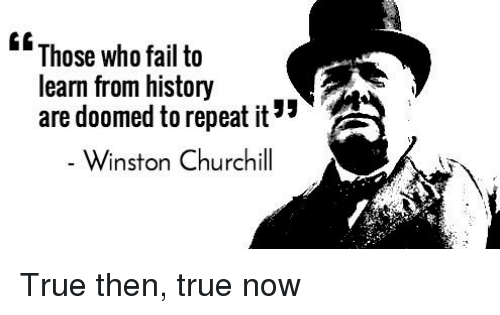
Having grown up it was inevitable that I should loose my childhood innocence… my eyes have been opened to the world of political intrigues. The lust for unearned wealth and to gain unjust Power are a re-occurrent theme throughout human history… ubiquitous to all times, places… and races.
There are no noble savages.
And yet… amazingly enough… there is a delicate… faltering… thread of progress that has raised many modern people out of squalor and misery and given them standards of living barely dreamt about in past ages.
The defense of the values and ideals which underpin Human betterment are a sacred duty to those of us who have seen the light.
We must be eternally vigilant and on guard for the forces of darkness… certain lobby groups… and self interested parties …. motivated by envy and greed are ceaseless in their conspiracies to destroy… for rapine… and plunder… and to accrue political power.

History declares evil has no Racial preference. Marxist Rebel and Former President of Zimbabwe Robert Mugabe became one of the most brutal and wealthiest men on Earth while his country writhed in despair. He came to power and was supposed to be the savior of Black Zimbabweans from ‘White Supremacy’.
All he brought was greater misery… and greater racism.
It must be noted that in no way has New Zealand ever resembled Rhodesia… and yet that is how the Far left racist radicals have sort to portray the colonisation of New Zealand.
In their use of Marxist ideology… they are one and the same as Mugabe.
They seek to destroy western civilisation and accrue power for themselves.
And they seek to deceive the Fools by appearing to champion noble causes and ideals…
History proper exposes their lies and methods.
Understand this.
**********
Applying this to what is currently afoot here in New Zealand the far left Radicals seek to distort history by asserting that Maori did not cede sovereignty via the treaty of Waitangi, and accuse British colonials as invading these islands with the express purpose of annihilating the ‘indigenous’ [sic] population, and to divest them of their land. This is their asserted ‘grievance’ that asserts the British Crown and subsequent colonial government did not honour the terms of the Treaty of Waitangi… and that these transgressions that are said to have occurred over 150 years ago… need to be recompensed today.
What they seek to establish and perpetuate is a racially divided nation.
It must be asked… given the treaty grievance industry funnels billions of taxpayer dollars into tribal interests… and grants them undemocratic powers… Whom is really trying to rob and subjugate whom?
If you have a caring heart… I ask have you ever been deceived by professional beggars?
Chumps are born every day. Shysters know this.
******
Lets look at what the history books say and evaluate their authenticity.
How did the historian James Cowan view the collonisation of New Zealand?
This commentary series on James Cowan’s two volumes ‘The New Zealand Wars’ is part of my ongoing investigations into New Zealand history with regards to old world Maori culture, European colonisation, and modern day far left radical ideology and politics which have been progressively rammed down the throats of New Zealanders over the past 50 years.
It is my contention that these modern political doctrines are grotesque fabrications, perpetrating frauds and extortions, and wreaking havoc and social unrest in our once blessed nation.
They rely on ignorance and the falsification of history.
In these ambitions they display the common base traits of the dark side of humanity.
I realise these are heavy assertions.
Can I vindicate my positions?
I believe I can, because my historical perspective about the colonisation of New Zealand was the conservative position not too many decades ago… not radical by any means… before the subversive Marxist doctrines took hold.
These doctrines were not drawn from concrete facts but specifically formulated to cause strife and unrest.
To divide and conquer.
And they have to a large extent been successful in their subversion.
Though still the greater percentage of New Zealanders find their claims incredulous… none the less in academia and Political circles their lies have become ‘Officially sanctioned’.
I am seeking to confront these charlatans head on… with the facts!
The great lie they are peddling is to deceive the nation that it is my Anti-Grievance and Anti-Separatist leanings that ought to be seen as radical and misguided.
They would have you believe that my striving for Constitutional Racal equality before the law… is somehow… racist!
Contemplate that.
*******
What is the historical truth about the European colonisation of New Zealand?
This post is my introduction to this study of Cowan’s important publications.
At the time of writing this I am currently only about 20% of the way through reading volume 1.
By the end of writing my commentary, I hope to have given many proofs taken from Cowan, that affirm the correctness of my personal position which is a forthright repudiation of Modern Treaty grievance and Apartheid and the lies they are founded upon.
Will Cowan’s account vindicate my perspective?
Even if they do… do his opinions have any weight?
Why should we trust him?
In studying his accounts to what degree will my current views be further entrenched or be confronted with facts that demand contrition and correction on my part?
It is always a good thing to stand corrected… it is a positive good, and yet the corrupt detest facts that contradict their prejudices.
I will consciously resist the urge to overlook uncomfortable facts. Indeed these are opportunities to grow deeper understandings.
Having read about 10% (of both volumes) already he has presented me with many justifications… and challenges.
These will make for interesting commentary in future posts.
I am already learning much… and look forward to reading more.
********
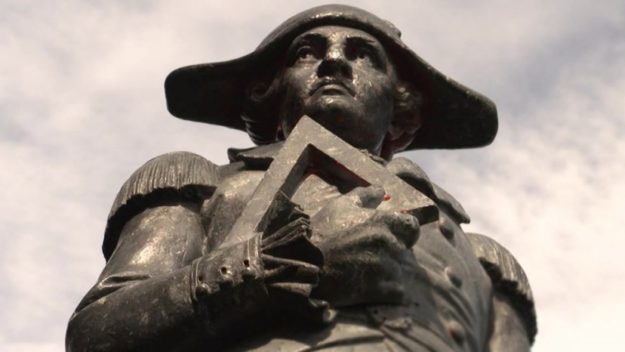
Capitan Cook.
Read a short biography of James Cowan here.
Quote:
” James Cowan (1870–1943) grew up on Waikato land confiscated from Māori. The family farm included part of the Ōrākau battlefield.
It was here that Rewi Maniapoto, when asked to surrender, had famously told the British that he would fight on ‘forever and ever’ (‘Ka whawhai tonu mātou, Āke! Āke! Āke!’). Cowan’s lifelong fascination with colonial history grew out of his childhood experiences.
During the first decades of the 20th century Cowan wrote more than 30 books and hundreds of articles on New Zealand history, Māori ethnography and travel. He read widely, and did much to shape the way New Zealanders viewed their past.
He is best known for the two-volume The New Zealand Wars: a history of the Maori campaigns and the pioneering period (1922–23). Until relatively recently this was the definitive account of the New Zealand Wars, and remains a classic. It is particularly notable for his use of both Māori and European oral sources. Cowan died in 1943.”
We are concerning ourselves with his two volumes on the Rebellions.
The term ‘Rebellions’ is more accurate than the term ‘Wars’ as calling these wars does not correctly identify the type and nature of the disputes.
We can glean a lot about Cowan from that very concise statement.
He grew up in the decades following the Waikato war, and lived among Waikato Maori… at the heart of the Kingite struggle, and saw the defeated Rebels as heroic warriors.
From the first chapters this disposition is evident in his writing yet he adds some balance by noting the heroism of such men as Governor Grey.
He is generous with his approbations on both sides of the disputes.
So far so good!
With respect to Rewi Mainiapoto, I hope to write a post on him in due course when Cowan deals with the Kingites. The romanticism of our day grossly distorts the true nature of the conflicts by excessive lionisation of the murderous savage rebels, and villainising the heroic colonials who valiantly thwarted the Rebels genocidal ambitions. In the end Rewi Maniapoto would recant his part in taking up arms… having despised the council of a Chiefly ally who predicted the sorry outcome that would befall the rebels.
The slant that Romanticises those who advocated for violence, can be seen in the Maniapoto quotation above.
From my own studies it is rare indeed to encounter any writer from the beginning who did not to some degree evidence this embellished perspective.
The tendency almost universally favors the Rebels… which is the very opposite of what modern revisionists claim… ie they insist that history has been unfair to them, and that Maori have been the victim of 150+ years of systematic ‘White supremacist’ indoctrination.
This is utterly false.
The truth is Pakeha like Cowan grew up with Maori friends and neigbours and did not harbour Racist ideals, or look down upon them… this is evident in the contemporary records… and was evident in the very nature of New Zealand society until the Far Left Racist radical separatists started their toxic political campaign in the early 1970s.
Getting back to Cowan’s accounts of the conflicts…
Myself… as a person who has read a decent amount of classic War histories such as Herodotus’s account of Leonidas and the 300 at Thermopile , The works of Xenophon, Josephus, and much more I affirm Cowan’s writing style as being on a par with these…. first rate and on this basis alone we can appreciate why he is held in high regard.
It is the type of writing style that propagates a love of history in youth and adults alike.
Cowan has been a chief inspiration for many New Zealand historians ever since.
It helps that New Zealand’s birth is part of an heroic and contentious age.
It was a time when Men were really ‘Great’.
Cowan states that our history is as rich in character and exploits as the histories of many other Western nations and his writing style and attention to details vindicates this claim.
Photograph of James Cowan at his desk writing. Photographed by an unknown photographer in September 1940. Ref: PACOLL-5877-5
*******
James Cowan is considered by many the foremost historian on the series of Maori Rebellions that occurred in the decades following the Treaty of Waitangi in which British Sovereignty was established.
I want to examine his work and see if such pre-eminence granted him in this subject is well founded, or not?
I am chiefly concerned about objective truth… not writing style.
How much authority and truthfulness ought to be justly ascribed to his writings?
This is not simply a matter of ‘taste’… if he agrees with me he is ‘right’… if he disagrees with me… he is ‘wrong’.
There is too much at stake to leave history in a fog of ambiguity… and simply a matter of subjective opinion.
If you love history proper what matters is *Truth*.
What matters is doing justice to history.
We need to evaluate Cowan’s objectivity and power to reach legitimate conclusions.
We must distinguish what are recorded statements that were spoken by the people involved from mere speculations about their motives that really belong to the writer… not the subject.
This temper is essential if any hope of sifting the wheat from the chaff is to be achieved.
How ought we to consider his personal opinions, insights, and embellishments he uses to add colour to bare Objective facts, and by which we can perceive his leanings?
Does Cowan evidence gross ‘Euro-centric propensities’? or any other skew that needs to be appreciated when evaluating his works?
How fairly does Cowan treat the character of the various actors he is writing about?
These are the sorts of questions that shall be at the forefront of my study.
I will also be looking to clarify the root causes of the Rebellions.
According to Cowan… what were in his view the main chief causes for the various outbreaks of hostilities?
These rebellions were in breach of the Treaty and a challenge to British Sovereignty.
Cowan speaks of this fundamental point from the beginning… eg Regarding Hekes Rebellion at Russell …Chapter 5 Titled ‘The first British march inland’ … Cowan states…
” On the 27th April an expedition totaling 470 officers and men under Lieut-Colonel Hulme, of the “Slains Castle,” the “Velocity.” and the schooner “Aurora,” with the object of re-establishing the Queens Soverignty at Kororareka and carrying the war into the enemies country.”…
The paramount importance of this fact stands in stark contrast to the patent falsehoods and denials of modern revisionists that Maori like Heke were in Rebellion to the sovereignty which had been ceded to the British Crown at Waitangi in 1840.
Instead they pedal the modern innovation of ‘co governance’ and ‘Treaty partnership’.
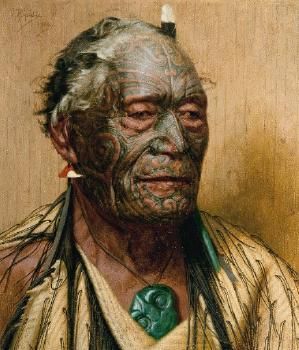
Chief Tamati Waka Nene.
I would never suggest that British governance of the day (nor any government anywhere) was not without it’s flaws… yet from the facts of recorded history and logic we see it was ‘Old world’ Tribalistic Maori Like Heke who from self interest butted heads with the legitimate British authority.
Can anyone looking back be surprised that such disputes would arise simply by the nature of the situation???
Given all factors and conditions of the times these things were virtually inevitable!
There was no malicious intent on the part of the newly established British rule to provoke hostilities from Ngapuhi.
Violence was initiated by Heke… yet most of the Nagapuhi Chiefs supported the Governor… esp Tamati Waka Nene who fought against Heke on the side of the Colonial Governor.
The hypocrisy of the Modern Revisionist is that they play the victim… when in reality they themselves are distorting history for political advantage and financial gain and the expense of the rest of New Zealanders. Their Racism and Political Corruption is patent… and yet we are not allowed to say as much. Broadcasters, and Public figures get deplatformed when ever they dare to challenge the foundations of the new Race based power structure.
With the establishment of British rule via the Treaty upon a land in which Chiefs were used to governing their own affairs… we should not be surprised that discontent and suspicions arose… for that was the norm between Hapu… and Iwi, and to transition from that state of Anarchy to building *A Nation* whereby the Law prevails rather than the Taiaha would take time.. and big changes.
These changes were implicit in the establishment of British rule.
The anarchy of inter-Tribal warfare… esp now the Tribes all had muskets… could not be tolerated in a civil society… and it was expressly for the sake of ending the Bloody tribal wars that the Maori Chiefs invited the British crown to establish the rule of Law.
It had nothing to do with ‘White racism’ using their terrible ‘technological advantages’ to plan and execute a Holocaust upon the indigenous population… to exterminate them and take their lands.
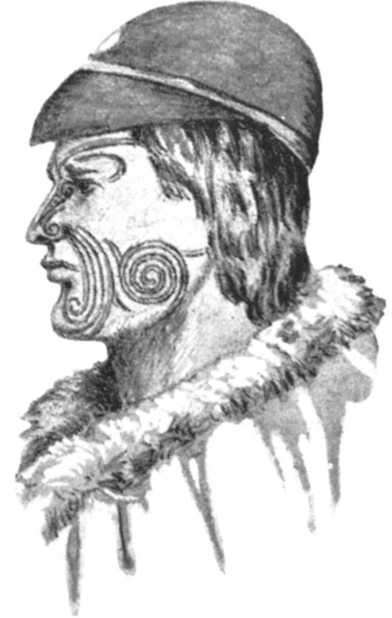
Hone (John) Heke.
Each major outbreak of rebellion was of course the result of some contentious issue… the first one mentioned in Cowan’s works is the rebellion of Hone (John) Heke at Russell (Kororaeka) in 1845… the chief cause of which being newly establish heavy Customs duties being imposed on trade goods drove away traffic from the port.
The imposition of these customs duties (1841) was obviously an attempt by the Governor to defray costs of running the colony (established by Te Tiriti O Waitangi in 1840) from the British Crown.
It is an interesting lesion in economics that raising heavy taxes is very bad for trade and the prosperity of any economy.
Pre-treaty Russell was the key port in New Zealand. Ngapuhi Chiefs like Heke had been making a lot of money from the shipping and trade that visited the Bay of Islands in those times and had even levied their own ‘Port dues’ on every ship, and they also traded in prostitution, and ship’s stores to whalers.
More on Heke will be forthcoming (next chapter of my commentary), it suffices for now to mention that after the Treaty and the establishment of other centers of settlement and industry around the country… out of reach of the Governors ability to enforce tariffs the post-treaty imposition of Customs duties in the Bay of Islands put trade into decline and this adversely affected Hone Heke’s ‘Business’ and income.
Read about this in Chapter 3, pages 16,17.
Hence Heke was not happy about how things were unfolding after the treaty… and despite the fact that he had been partly civilized and educated at Henry Williams Mission Station, being still at heart a wild Cannibal Maori Warrior Chief, he chose to deal with this situation the ‘traditional way’ Maori Warrior Chiefs took care of ‘problems’… by taking up arms.
The rebellions were power struggles… a coming to terms with the new order, yet contrary to the politically manufactured assertions of the Modern revisionist of our times, there was no overt nefarious plot by Pakeha… no overt bad faith or willful breaches of the Treaty involved on their part.
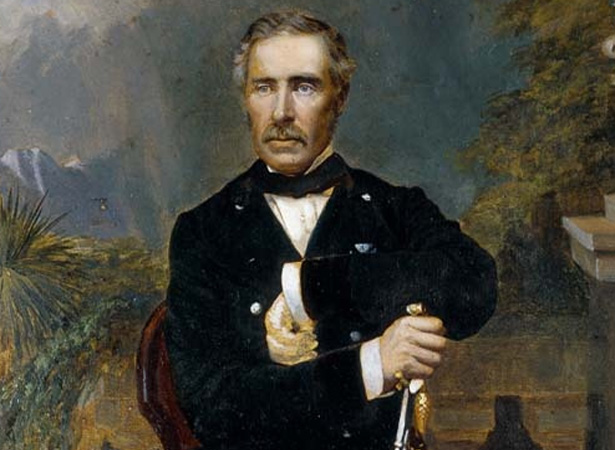
‘Good’ Governor Grey. Respected by all including the first ‘Maori King’ Potatau.
Mistakes were made and sometime the curcumstances were beyond control yet one of the spectacular facts about the Birth of New Zealand as a Nation was that it happened during the time of enlightenment ideals.
Slavery had been abolished in the British empire.
The Treaty recognised the rights of All New Zealanders as Equals… British Subjects… including Maori.
And New Zealand was fortunate to have the highest caliber Statemen like ‘Good’ Governor George Grey at the helm during its birth pangs.
Was there no greed?
Was there no weasel business dealings?
It would be stupefyingly silly to pretend that instances of chicanery did not occur culpability being on either side… for such is sadly human nature… and yet it is a bare face lie to assert that the Colonisation of New Zealand by Europeans was an invasion based upon deception… and that it involved systematic Racist oppression of Maori.
We should not be surprised that some chiefs took it upon themselves to rebel when things went in directions that did not satisfy their self interest.
Such rebellion is completely understandable given the weak state of the governing power of young colony, the short passage of time that had elapsed from the signing of the Treaty, and the nature of the Maori Tribal ‘norms’ that still prevailed. Were it not for the Good will of Chiefs like Waka Nene who chose to honour the Treaty and support the Colonial Powers against rebels like Heke… the colony in New Zealand would have been short lived indeed.
Cowan himself makes the point the ongoing settlements of the Pakeha post treaty existed by ‘sufferance’ given the numerical superiority of Maori in the early years.
This means the greater percentage of Maori themselves could see the many advantages the industrious British settlers brought to their shores.
“He who controls the past, controls the future” George Orwell.
Though these wars happened over 150 years ago Far Left Political Radical activists and politicians in recent decades have twisted history into a bludgeon with which to destroy Racial Harmony that had grown up in the years of peace and good will that grew out from peace between the races, an end to tribal anarchy, and the establishment of the rule of Law.
This suffices for the introduction of my commentary on Cowan’s 2 volumes
As I have already stated… I will talk more about Heke’s rebellion in my next post.
I have purposefully made a lot of bold claims in this introduction with the intent of vindicating myself in future posts.
Please challenge me in the comments…
The commentary I have made with respect to this early rebellion in this post serving to illustrate a common theme that would play out in other outbreaks of rebellion… and how the modern Far left Radicals distort the truth.
Tim Wikiriwhi.
More from Tim…
The Wanganui River and the incredulous incantations of the Neo-Tohungas…
Tim Wikiriwhi’s Submission to the New Zealand Government’s Constitutional Review. 2013
Mt Everest is for Wimps! Lets Conquer Apartheid Government in New Zealand! A strategy.
Universal Pride in Washington, Separatist Shame in Wellington.
Trojan Horse: The UN Separatist Declaration of Indigenous Rights.
My speech for the 1Law4all party 2014 AGM. Tim Wikiriwhi. 17 June. Hamilton
A Submission In Opposition To The Electoral (Entrenchment Of Maori Seats) Amendment Bill
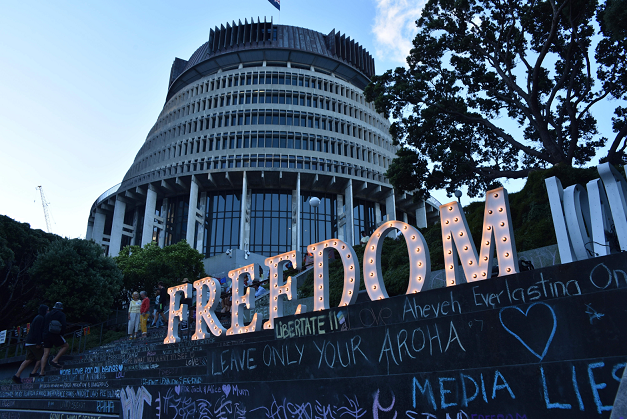
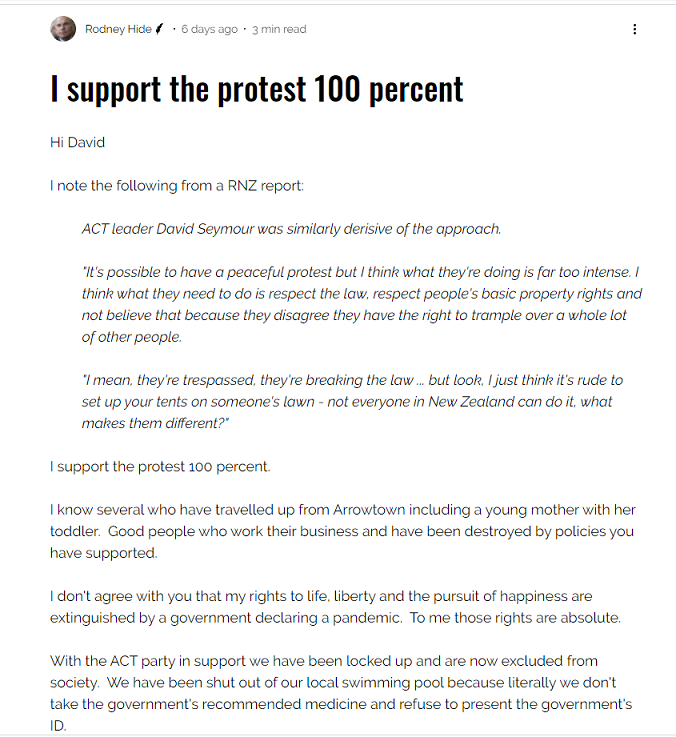
Read full statement here
CLASSIC! Hide pouring well deserved scorn on PATHETIC David Seymour and his utter failure to defend the rights of New Zealanders reeling under the onslaught of Far Left PM Ardern’s Socialist tyrannical Covid measures!
Hide in particular leads by example saying he personally supports the Anti Mandate Protests currently being staged outside the Beehive over the past several weeks.
In this Rodney derides Seymour for his petty complaints about the protests ‘ruining the grass’.
Seymour displays his utter disconnect with how vicious Ardern’s policies have been upon those who will not bow before her. Seymour seems to think the behavior of the protests have been unduly Riotous and Hateful.
Hide on the other hand has a far better understanding of the oppression and injustice the protesters have endured at the hands of Ardern, and marvels at their restraint!
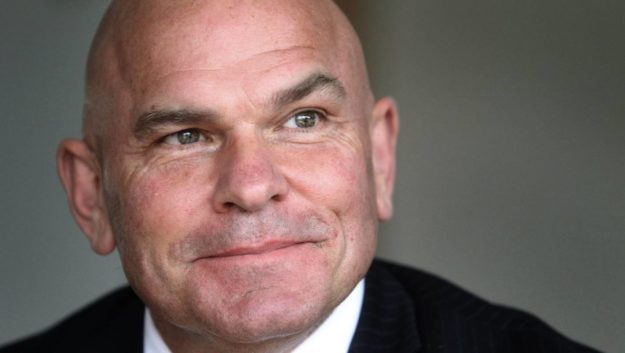
Former Act Party Leader Rodney Hide. (Photo credit here)
That Hide had to give Seymour such a basic lesion on Rights and Freedom speaks volumes about Seymour’s feeble apprehension of the very core values and principles he claims to champion!
Under Seymour Act has become the phoney Freedom party!
In reality Act is today merely the ‘David Seymour party’ in the same way New Zealand First is the ‘Winston First’ party.
Act policies are not principles… but what ever horse shit comes out of David Seymour’s pea-brain.
It is patently obvious that none of Act’s other Mp’s who owe their positions to Seymour is allowed to dissent from their Leaders dictates…. How shameful none of them has had the courage to publicly dissent from David’s shameful support of the Ardern regimes Covid 19 tyranny.
Despite my reservations… and because of a dearth of alternatives…over the last 10 years I have done my best to try and support Act and encourage David Seymour to walk the principled path only to be disappointed *every time*.
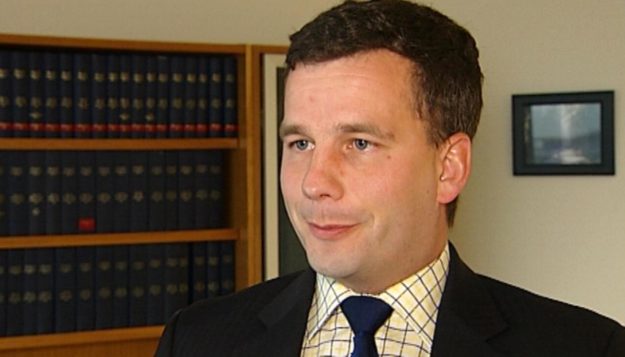
Current Act Party Leader David Seymour. (photo credit here)
Act picked up a lot of support last election when David came out in opposition to Ardern’s new gun prohibitions, yet it turns out that this stand was not taken because of ideological integrity but from pragmatic opportunism in fortuitous alignment with David’s own capricious enjoyment of shooting.
This seems to be the essential criteria.
We must ask if David himself had a personal aversion to shooting would he have come out in support of Gun owners rights on principle alone?
That is highly unlikely… and that is why I say he operates very much the same way as Winston Peters… via his own whims and inclinations… fishing for votes… not guided by principle.
He will use principles only when he believes there is a vote in it for him… otherwise he will disregard them at his own pleasure.
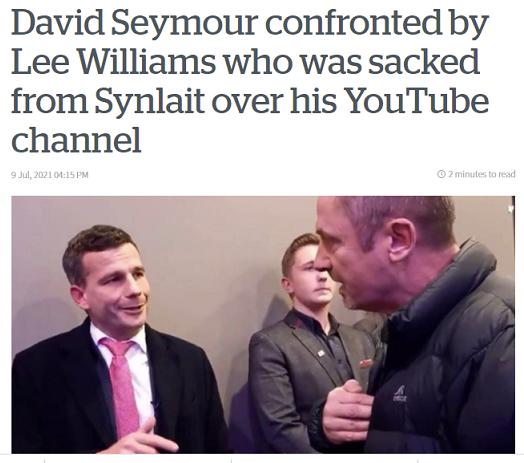
David proved his claims to be a defender of the principle of Free Speech were exposed when he failed to condemn the deplatforming and persecution of Youtuber Lee Williams. That again was a classic example where David allowed his personal dislike of Lee to cloud his judgement.
This showed Seymour was simply politicking for votes when he claimed to champion Free Speech.
And he will sit on his hands and allow injustices if he does not like you.
That is how petty he is.
Though I have been absolutely disgusted with Seymour’s failure to oppose Ardern’s Rampant Covid 19 Tyranny that has been enslaving and destroying lives, The last straw for me was earlier than the 2019 Pandemic when David supported Ardern’s Ultra-radical Abortion laws that allow children born alive after failed abortions to be left without medical assistance on the slab… to die!
This again demonstrated Seymour’s complete lack of understanding about Rights and responsibilities!
I will never vote Act as long as David Seymour is Leader.
He is a Flake and a fraud… a Politician in the worst sense!
In our Nations hour of need he has been found wanting.
He has supported the destruction of our Nation by Ardern.
Seymour doesn’t even have enough brain cells to appreciate the Great Reset is a real thing!
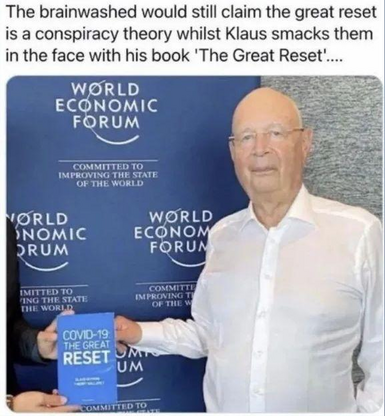
Hopefully by the 2023 Election the newly invigorated Freedom movement in New Zealand will have formed a vote-worthy alternative to represent Freedom lovers who want to Constitutionally protect our nation from such treasonous, Radical, and patently tyrannical policies as were enacted under Ardern’s 2 terms.
We want our Country Back!
END The Mandates!
Undo all Ardern’s tyrannical Legislation.
We must amend and entrench the Bill of Rights, esp section 11!
‘Every person has the right to refuse to undergo any medical treatment’.
Private companies must be held to uphold the Bill of Rights.
Tim Wikiriwhi.
Christian Libertarian.
Update: Rodney Hide’s article seems to have touched a nerve with Seymour as he has ‘appeared’ in public opening up a dialogue with the protesters…
Watch the video below.
By supporting Arderns tyranny Seymour has dug a big hole for himself and Act’s support is in decline.
Don’t you think it is hypocritical for him to say that he only agreed to talk with the Protesters because ‘a Friend in business who was being adversely affected by the protests’ asked him to meet and open dialogue. He says it is ‘unacceptable’ that the protests have impacted on Wellington businesses like this, and yet where was David’s voice opposing the impact on business of all the lockdowns, the heavy borrowing, and esp the thousands of Job losses of New Zealanders via Ardern’s Vaccine mandates?
You know… the very things that have caused New Zealanders to exercise their democratic right to congregate in Wellington to express their anger???
Where was his condemnation and opposition to the passing of Legislation that violated the Bill of Rights?
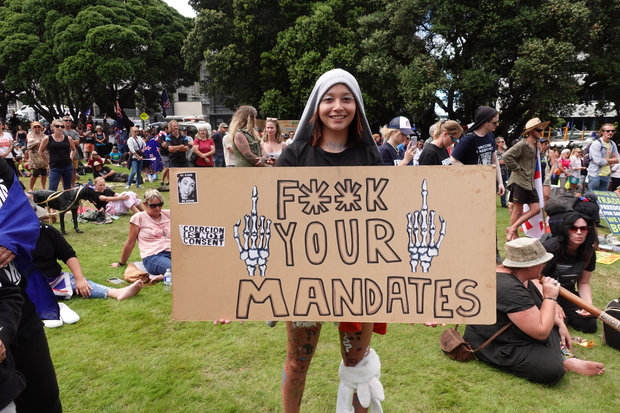
Update 2.
My goodness… even ‘Dame’ Tariana Turia has now come out in ‘whole hearted support’ of the Anti-mandate protesters against the Ardern Regime!
She even says she is against the mandates *in Principle*!
She even see’s through the Government attempts to paint this protest as criminal and violent.
Now I am a long term critic of Turia’s separatist politics yet in this broadcast … On all points she shows superior moral courage than Seymour on this current issue and deserves commendation.
Listen to No confidence in Ardern – Dame Tariana Turia
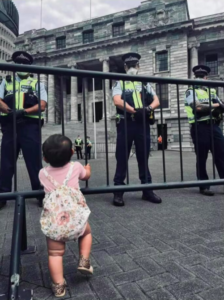
More from Tim…
THE STORY OF COVID 19 IN NEW ZEALAND, BY TIM WIKIRIWHI 2021.
MY SUBMISSION ON THE INQUIRY INTO THE GOVERNMENT’S RESPONSE TO COVID 19.
JACINDA ARDERN IS MORE DANGEROUS THAN COVID-19: CENSORSHIP AND CONTROL OF THE PRESS.
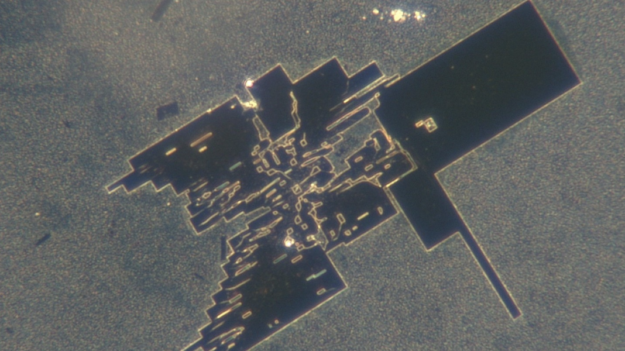
A friend just sent me a link to a Blog article written by independent Kiwi thinker Olivia Pierson entitled
New Zealand Scientists Find Nanotech-like Particles in Pfizer Vaccines
Please click the link above and read her article.
I must admit to finding these claims incredulous… I was worried they were ridiculous frauds designed to make any members of our Freedom movement who bought into this look like loons…
Yet I have respect for Olivia’s intellect, and since she has spent far more time than I have investigating these claims, that she finds them to be made from reliable sources … this is mind blowing stuff!
Part of the difficulty for me is simply trying to make any sense of these Nano ‘Structures’… they are so alien-like… this really is like something out of a Science fiction movie.
And yet despite this stretch of the imagination what ought to make a free thinking person pause is that it is no secret that The Bigwigs pushing for ‘the Great Reset’ like Klaus Schwab openly admit using the Covid 19 Crisis as an opportunity to realise their scheme, are also heavily into ‘Transhumanism’… and ‘the Forth Industrial Revolution’ whereby mankind interfaces with Super technology.
Schwarb openly talks about this… and it is in this context that sends chills down my spine that Scientists about the globe are now making claims they have found inexplicable Nanotec in the vaccines.
That Microsoft Founder Bill Gates is also at the forefront of getting these vaccines into every arm has also been a weird ‘interface’ of the Computing Tech World and the Vaccines.

Reading Olivia’s article is causing me to reevaluate my skepticism about the veracity of these claims.
And I have even more unsettling thoughts from a completely different quarter to throw on the table!
Now what I am about to say will probably blow your mind…. It has to do with ‘Transhumanism’ and the Bible.
Please bear with me…
While most people living in Western societies will be to some degree familiar with the Apocalyptic story of the rise of the Global Antichrist who is to enslave the whole Earth and cause all to receive ‘The Number of the Beast’… no one being able to buy or sell except they have the mark ‘in’ their right hand or forehead (Revelations 13) , there is another much less familiar prophecy that I want to discuss.
Read Genesis 6
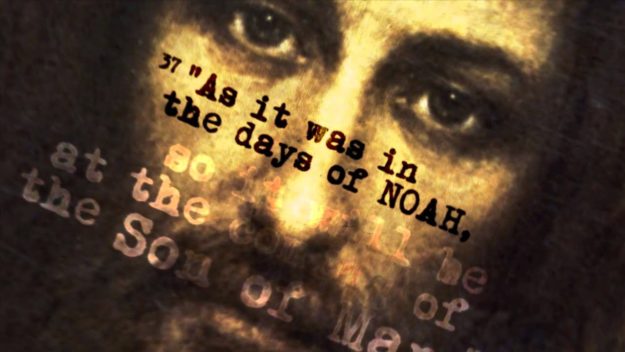
Christ likened ‘The End Times’ as being just like the days of Noah before the flood… people eating and drinking… etc.
Yet we are told something very ‘weird’ happened just before the flood … The Bible says that ‘Fallen Angels’ had sex with Human woman and produced ‘Angel/human hybrids’… Trans-humans… ‘giants’…. and that this represented ‘a genetic contamination’ of Humanity… and was the main reason for the Flood… to destroy this *Trans-humanist contamination* of humanity… Those who entered the arc were ‘Pure blood humans’… and they repopulated the Postdiluvian Earth.
So the rationale I have concerning Christ’s prophetic description of ‘the end times’ [today] being ‘like the days of Noah before the flood’… this seems to predict some sort of Genetic transhumanist contamination of Humanity.
This in my view could be precisely what they have done using the Vaccines.
These people doing this are Satanic….in the literal sense.
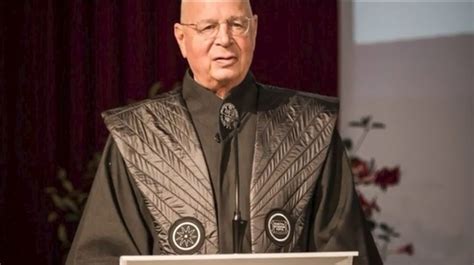
Nothing Odd or Sinister about Klaus Schwab…. nooooooo
The push to vaccinate every human being has been like some sort of Fanatical Diabolical Madness!
What The Hell are they doing to the human race?
Are these Nano-structures in all the vaccines?
This Batshit Dr Who level stuff might drive me insane… yet here we are.
You 90% Sheeple who blindly let them inject that shit into your bodies ought to be very concerned!
What is it doing to you?
Are you even ‘Human’ anymore?
Satan Laughing spreads his wings.
Tim Wikiriwhi
Christian Libertarian.
Update: It’s a Small World: Micro-tech in the Jabs?
Update: 13-2-22

Klaus Schwab: The Great Reset is the “Fusion of Our Physical, Digital and Biological Identity.”
Watch this.
UPDATE!!!! You cant make this shit up!
FDA approves Electronic Pills that send a message that the person has taken the ‘medication’ for *COMPLIANCE!*
“FDA approved the first electronic pill, sends a signal whether (for compliance).
Watch… This
More from Tim… THE TRUTH IS IN RETREAT. THE GLOBAL KINGDOM OF THE ANTICHRIST IS AT HAND . IS THE AGE OF GRACE COMING TO A CLOSE?
To be edited.
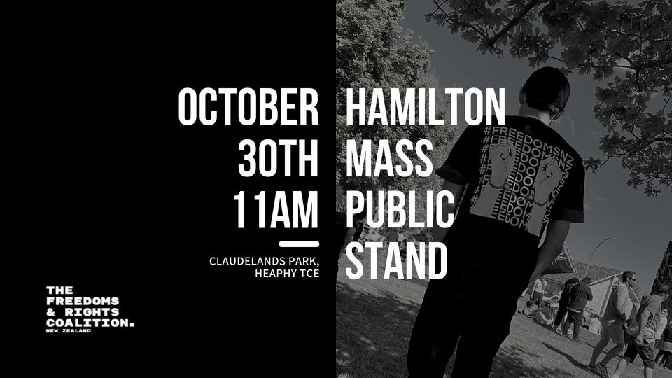
The other day I was chatting with a friend about all the lockdowns and government demands everyone get vaxed.
He thinks Jacinda Ardern has well and truly lost the plot!
He is a very mild non-political young man who just wants to get on with the business of living, yet he had no trouble recognising just how evil Ardern has become… how she is turning our nation into a Police State!
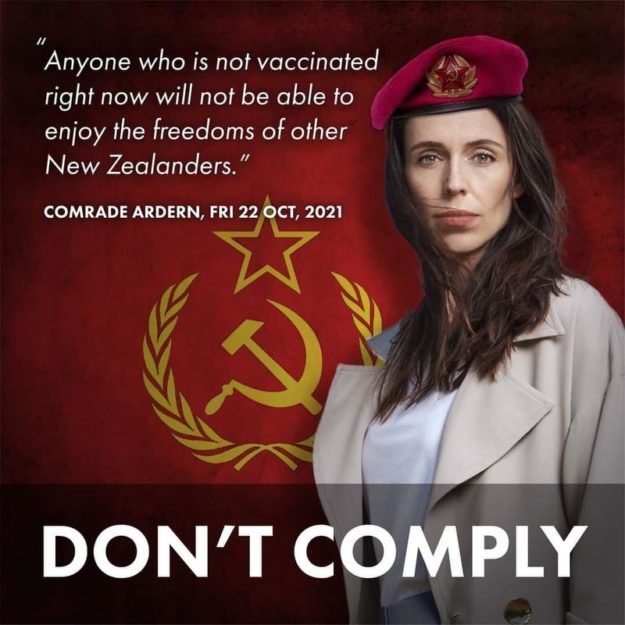
He was expressing his personal growing angst about being imprisoned in the Waikato and said it meant he was missing out on seeing Family outside the blockade.
I told him he was far from alone in his feelings, and asked if he had any idea at how many Hamiltonians showed up to the Anti-Covid 19 lockdown and Anti-Compulsory Vaccination protest that had occurred in the Weekend at Claudlands showground?
What protests?
He had no idea any such public protests even occurred?
He assumed what the media had told him… that resistance to the Ardern Strategy was tiny and only a small bunch of whackos were resisting getting the Jab.

Freedoms and Rights Coalition Waikato’s democratic protest against Lockdowns and Vax mandates. Claudelands showground 11am. Oct30 (est 5000 people)
He was shocked when I showed him some photos of the event which I had down loaded from ‘The Freedom and Rights Coalition’ web page… Thousands of Hamiltonians protesting! (Est 5000)
My friend is like so many New Zealanders who have had a guts full of Arderns incompetence and Tyranny yet who are being kept in the dark about the scale of outrage other New Zealanders are also feeling and that he is far from alone!
Among other outrages, almost 9500 business went belly up last month, and this sort of disastrous consequence of Arderns Jackbooted policies is now fueling a popular uprising. People are incensed by her indifference to their suffering and have had a guts full of her complete disregard for their Rights and liberties.

30-10-21 was a day of National Protest in which tens of thousands of New Zealanders gathered together in defiance of the Ardern regimes illegitimate and oppressive legal prohibitions that seek to circumvent New Zealanders Democratic rights!
The estimated 5000 peaceful protester’s in Hamilton were not standing alone as there were significantly larger demonstrations taking place simultaneously in both Auckland and Wellington.
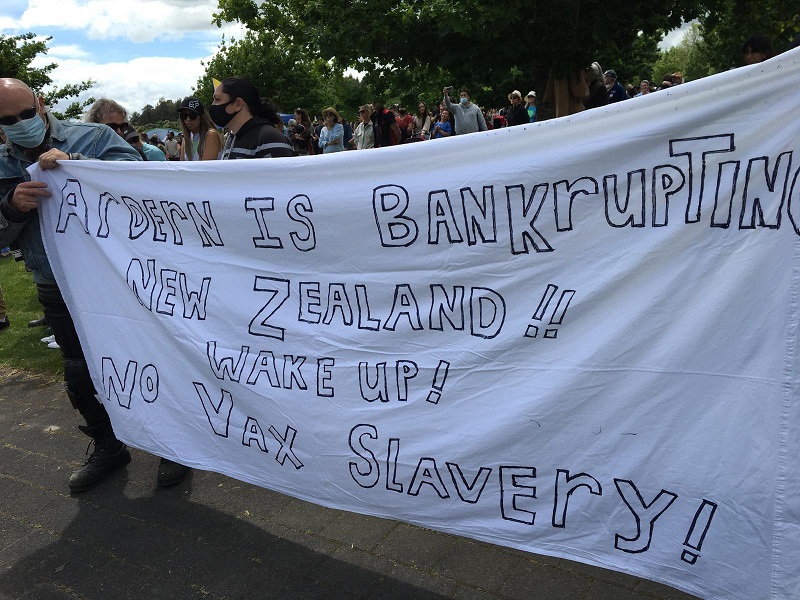
Yours truly holding up his home made banner.
The diabolical nature of the Ardern Regime (and Socialist Globalist regimes across Western civilisation) is that they have been using their powers to impose Covid 19 restrictions to prevent the voting public from gathering together to demonstrate their opposition to the financial ruin they are generating and the Police States they are cultivating while demanding the people shut up and let it happen!
Under the sham of Public safety Anti-democratic Covid restrictions prohibiting Public gatherings make it risky for citizens to assemble and by controlling the media has allowed the Government to pull the wool over a vast percentage of the population… that no resistance is even being attempted.
Individuals who are alarmed at what is happening are isolated.
Many of those who are bravely resisting compliance with big Bully Ardern in solitude feel as if their struggle is hopeless, because they are not aware of any support groups for their plight.
They don’t realise the battle is now well underway to put Ardern back in her box!
Many unwilling people will have surrendered to what they assume is a lost cause.
To those whom have been holding out for their rights I am writing this blog post to say Despair no more!
The Freedoms and Rights Coalition has put out the call to Kiwis to rise up in exercise of our legitimate democratic rights to gather together and protest against Comrade Ardern’s oppression!

Too many Kiwi only get their information from the Mainstream.
Jacinda Ardern has New Zealand’s media snuggly tucked into her back-pocket.
Our Card-carrying Media are operating like a wing of the Governments Propaganda department… filtering news stories and censoring themselves… the effect is that New Zealanders think the whole country Loves Ardern and is falling into line. because they only hear stories that promote Ardern.
The Truth is quite different.
Ardern is economically devastating our nation… almost 9500 businesses folded last month!
A popular protest movement is growing fast.
Big protests have already taken place without almost any Mainstream media coverage… and the stories that have emerged have down played the numbers of people protesting and made out it is just the whacko-conspiracy nut jobs.
The Truth is Ardern’s tyranny is uniting the people against her… The people protesting are both young and Old, Maori and Pakeha… it is a beautiful thing to behold!
They are boldly chanting for Freedom!
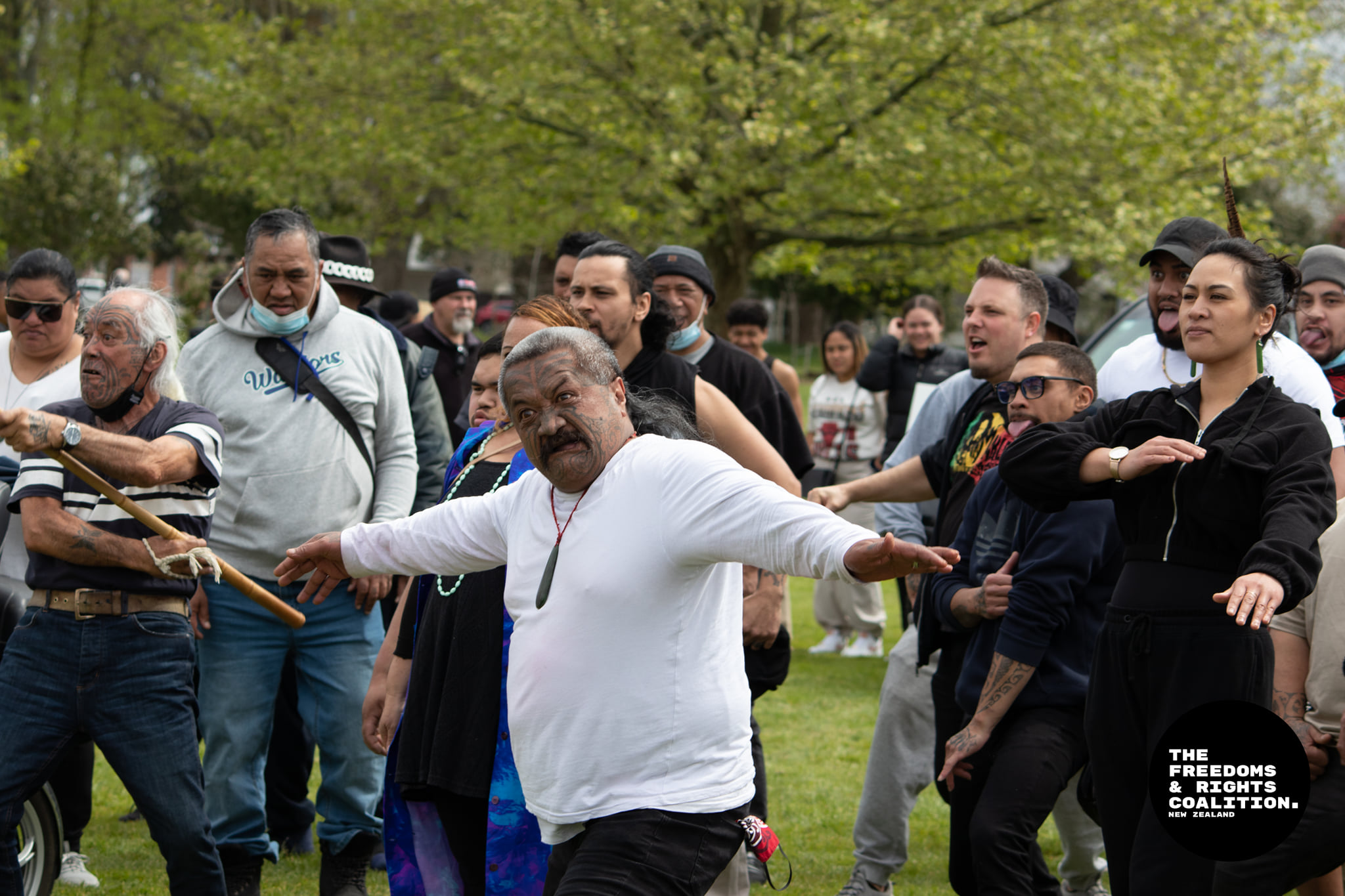
Waikato.
Yet most New Zealanders are completely unaware that the tide is turning against Comrade Ardern’s Dictatorship… and yet it is!
I wrote about our corrupt media back in 2012 yet they have gotten ten times worse now under Ardern and her blatant bribery… with strings attached… and all the woke Leftist Anti-free speech doctrines that have sprung up in the last decade…. Read LOST PLOT. WORLD PRESS FREEDOM DAY.
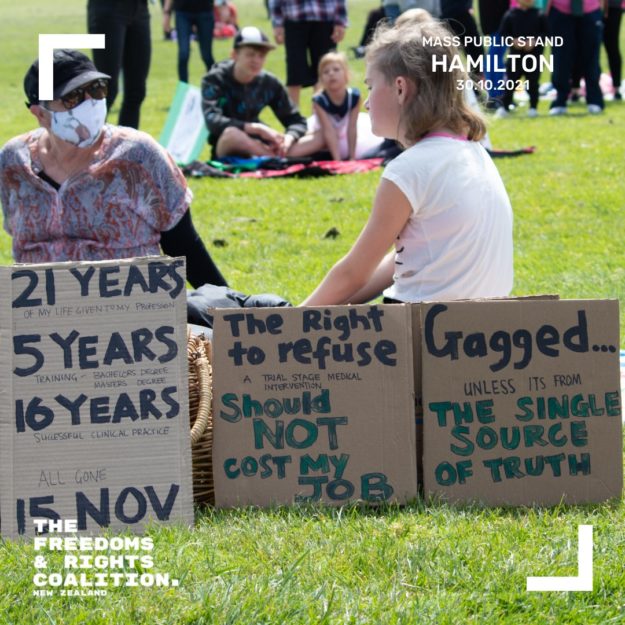
Because the Media have sold out to the government it is very difficult for the word to reach the people about planned protests.
That is what makes spreading the word so important to this movement.
Supporters are using their social media pages, and emails, texts, etc.
I was told only the day before that these events were planned, and knowing that they would not receive any objective press, I decided I would go see the event so that I could report back to the New Zealand public.
I needed to get the exercise, and this would be far more interesting than walking in my local park…again.
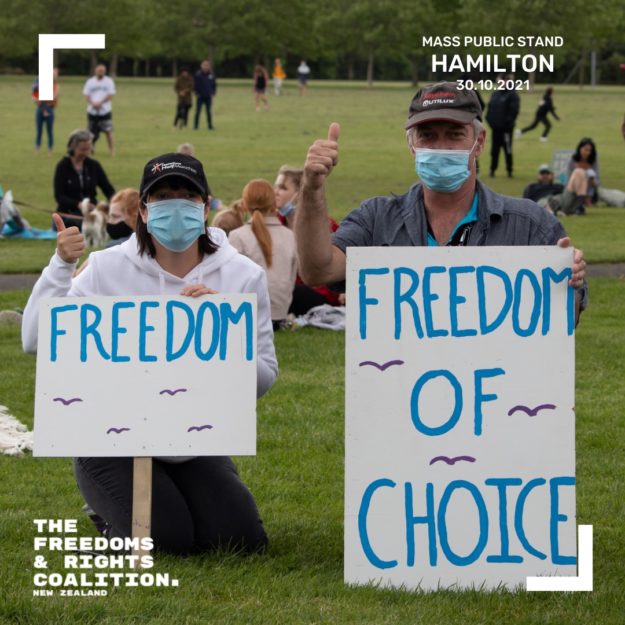
Many people were practicing peaceful Civil disobedience… not wearing any masks, and not social distancing, others (much less) were wearing masks and standing apart, and as I believe that for the sake of not generating unnecessary animosity against this righteous cause, nor to give pretext to the Police to break up the Demonstration and start arresting people, I chose to wear a mask (most of the time) and try to keep my distance as much as possible, and I appreciate why so many people were choosing to defy these oppressive and farcical measures.
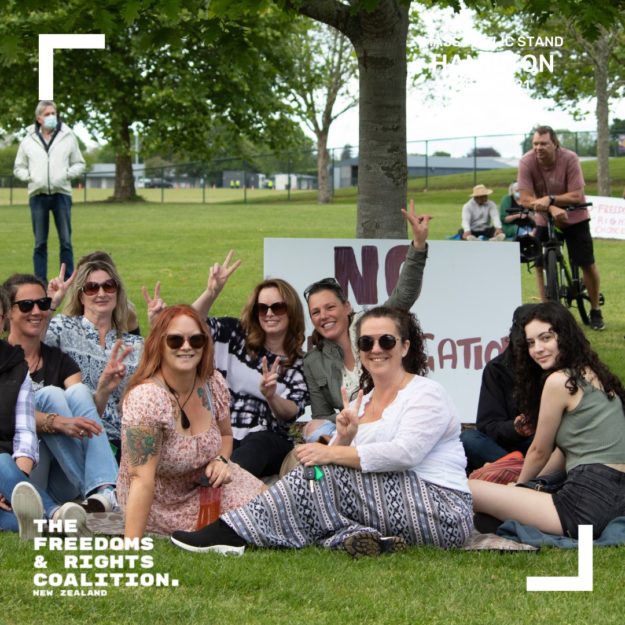
The thing to remember is that whether or not people chose to wear masks and social distance, and despite the way such protesters are portrayed in the Ardern funded media as being reckless loons whose behavior is an endangerment to the Law abiding (AKA Compliant and Complicit Sheeple), this is in fact an example of Civil disobedience at it’s highest form… because these people were simply exercising their legitimate rights!
In fact it was a display of the Bold assertion and exercise of their rights that the Ardern Régime has attempted to tread underfoot via passing unjust and oppressive Laws!
Ironically… Had she not done so… Had she actually done the right thing and respected the rights of the people… there would have been no need to protest!
So Ardern herself is the chief author of this entire mess!
She is a Tyrant, and it is the Right and moral duty of a free and enlightened people to Rally against her!

Ardern’s Tyranny is a far greater threat to our Nations well being than Covid 19!
Every hour she is at the helm the people of New Zealand lose their freedoms, and livelihoods, and our Nation becomes more like China!
Under the belief that Covid 19 was truly a raging fury, Long suffering Kiwis have quietly tolerated Ardern’s ever creeping Authorotarianism, yet she has finally crossed the line and has now turned massive sections of the People against her.
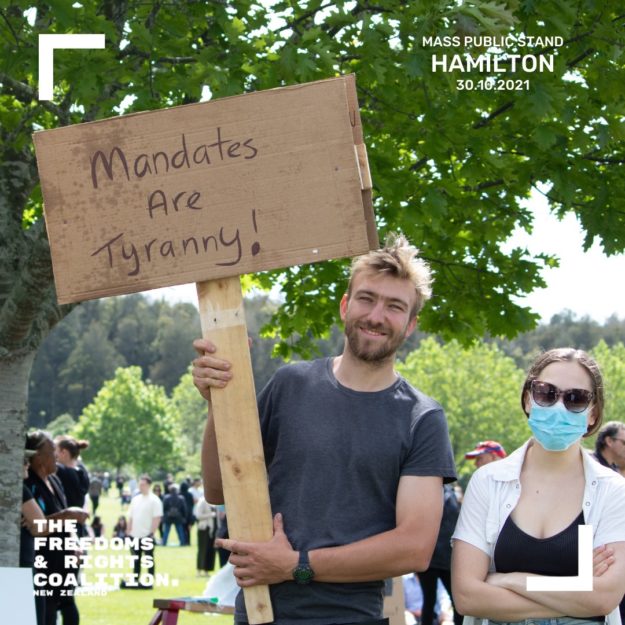
They have had enough!
They have gotten wise to the fact that the dangers posed by Covid 19 have been grossly exaggerated in the extreme to cause panic and compliance.
They have begun ignoring her oppressive laws… and it is this peaceful and principled Non-compliance that will break the Ardern regime!
This is Freedom and democracy in action against an oppressive Government.
This is what must be done when our rights are under threat from Socialist tyranny!
Let those who are scared of Covid 19 wear masks all day and stay locked up safe in their homes!
They have no right to demand everyone else share their paranoia or be confined to their homes simply to make the propagandised and traumatised neurotics feel comfortable in their sheepish cowardly delusions.
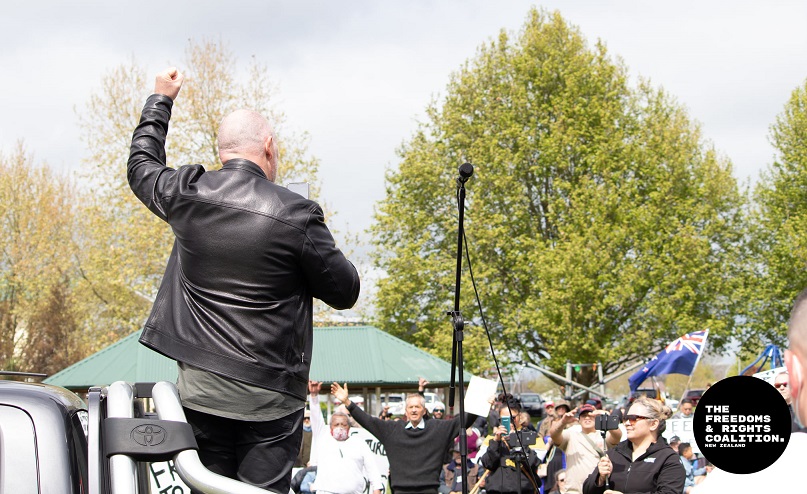
It is shameful that though I cannot tell you the name of the chief Waikato Coordinator and speaker as I have not yet been able to discover it.
When I do, I shall edit this article to include it for this man is heroically leading this protest movement from the Front!
I do know that he is a Christian Pastor… Amen Brother!
I did not hear the beginning of his speech, and yet the portions which I did hear filled me with respect and courage!
I agreed with every word!
His manner (and his Mana) was profound!
He spoke of his motivation for doing this as being love… not anger.
He said he hoped this whole movement would be characterised by love and peaceful action, and unity.
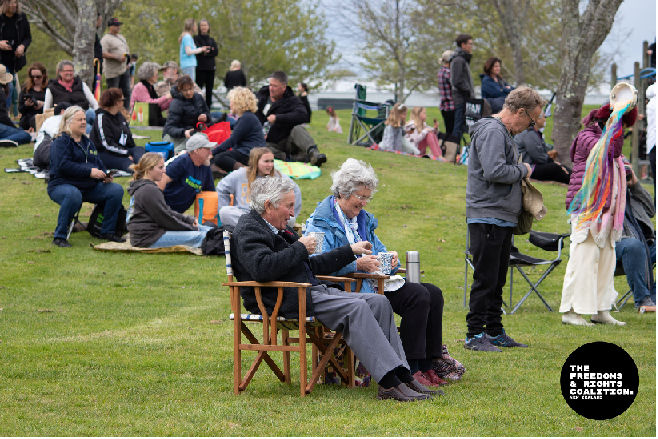
He said he knew that Covid 19 was a real disease, but that he was not scared of it.
He spoke of keeping the whole event as short as possible for the sake of not being unduly burdensome and testing on the Police.
He said he had already been finned for organising a previous protest and expected to be finned again for this one, yet he told the crowd he was ok with that and not to be angry with the Police. He said there were many good people in the Police force who have been placed in a very difficult position by the Ardern Government.
And most of all, and in finishing he made the most rousing call for the people to put their fears aside and boldly stand up for Freedom!
As a Libertarian, that was a special moment that near brought tears to my eyes!
In my 20 years of Activism I had never seen or herd anything as glorious as this!
I realised that Freedom is not dead in New Zealand!
There is hope!
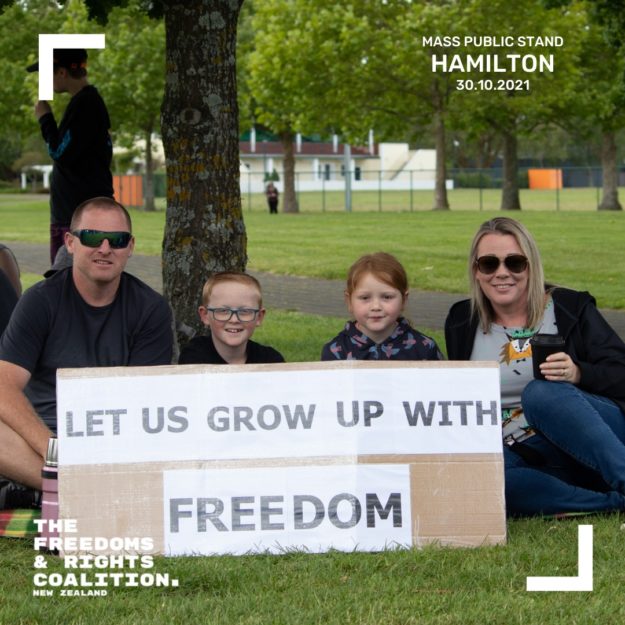
Finally he said a karakia (prayer) for the people, and our country and referenced the National Anthem that had been sung at the beginning of the event (I missed that).
He prayed that ‘The God of Nations’ would “Defend our Free land” and have grace upon our country and bless the people present and the task they were undertaking for Freedom and justice sake… and that New Zealand would not in this hour be lost.
He called upon God in Jesus Name… and the people… Old and Young, Maori, Pakeha, and many other hues with heads bowed said Amen.
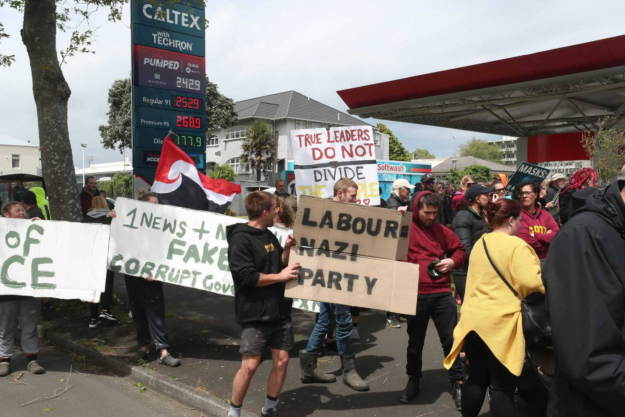
Whanganui…
Tide is now turning against Ardern’s socialist tyranny… New Zealanders have had enough and want their lives and freedom back!
Since this weekend Ardern has met more protests including one in Whanganui which prevented her delivering a press conference.
This has started to rattle her and expose the truth that she no longer enjoys the adoration of New Zealanders.
For the first time I have seen her being asked awkward questions at an interview.
She had to call another press conference short because she was being heckled… exposing just how fragile her personality really is!
One of my social media friend made the following observation…
“PM Jacinda Ardern who’s augments are so weak that she runs away from one person that challenges her. 😏 Absolutely pathetic…”
Jacinda Ardern’s facade has now cracking, and many people who were once taken in by her Staged Act of ‘Hugs’ and talk of ‘Kindness’ now see her for the Dangerous Machiavellian she really is and has always been… a Wolf in sheeps clothing.
She is having difficulty hiding her true colours.
Her open contempt for We the people she is Lording over is staggering!
More protests are planned.
This is just the beginning!
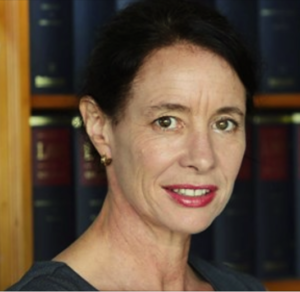
As yet another truly great New Zealander who has been doing so much to defend our Rights from this Socialist Globalist Plandemic… Lawyer Sue Grey… in Wellington said it was great to see people ‘stepping up into their power’ and that when we stand together ‘We can do anything’ and…
“They can’t stop us taking our Freedom back!”
Sue Grey has become a hero of mine for she is doing what I would like to think Good Lawyers ought to do… that is boldly taking on the powers that be, and using their Lawyer-craft to win Justice and freedom for the little people suffering State oppression and injustice.
Watch Sue’s speech here at The BFD.
Comrade Ardern and the Globalists have underestimated Kiwi resolve to maintain our Traditional Values!
New Zealanders Never never never will be slaves!
Tim Wikiriwhi.
Christian Libertarian.
See more Photos and activism by Freedom and Rights Coalition here

The Freedoms and Rights Coalition asks you to support them!
Note: I did not take any photos. All pictures in this article were either supplied to me by other people, or ‘liberated’ from other web pages (Credits given). This is important because I do not wish to expose the identities of any protesters without their consent. Thus I have not published any photos that are not already in the public domain without permission.
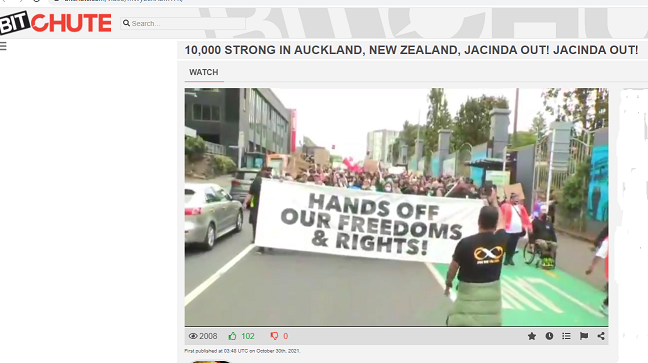
Go watch the Auckland march here.
Update: It has come to my attention that yet another Big protest happened in Tauranga on the 1st of November! Check it out here
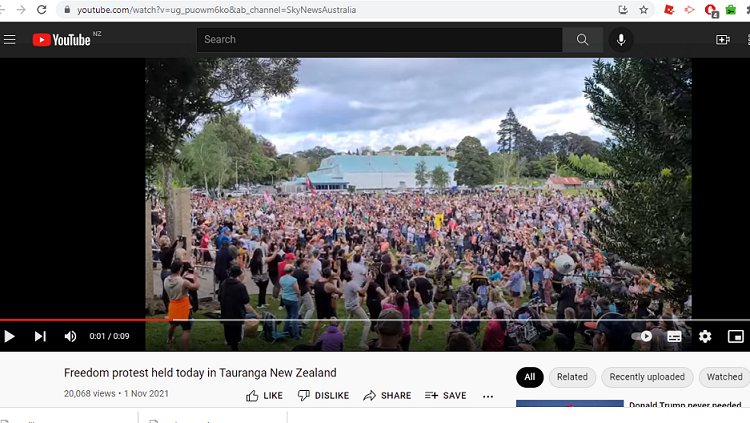
New Zealand has mobilised!
More from Tim..
JACINDA ARDERN IS MORE DANGEROUS THAN COVID-19: CENSORSHIP AND CONTROL OF THE PRESS.
MY SUBMISSION ON THE INQUIRY INTO THE GOVERNMENT’S RESPONSE TO COVID 19.
THE STORY OF COVID 19 IN NEW ZEALAND, BY TIM WIKIRIWHI 2021.
TIM WIKIRIWHI’S SUBMISSION TO THE NEW ZEALAND GOVERNMENT’S CONSTITUTIONAL REVIEW. 2013